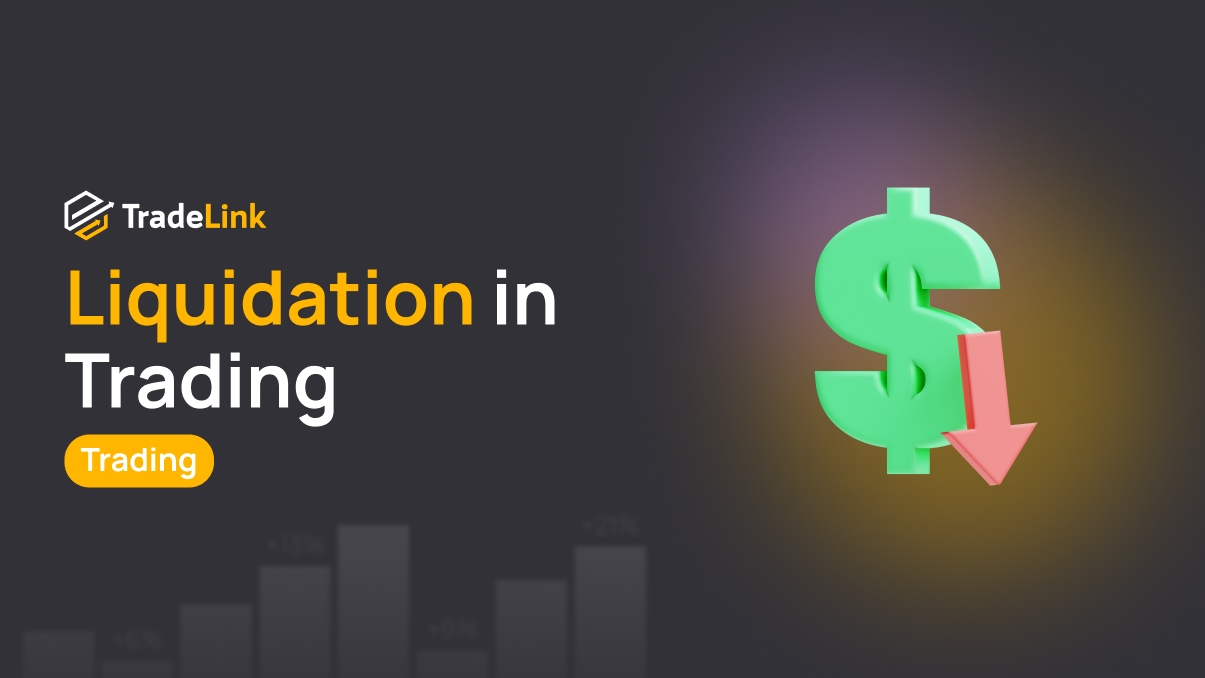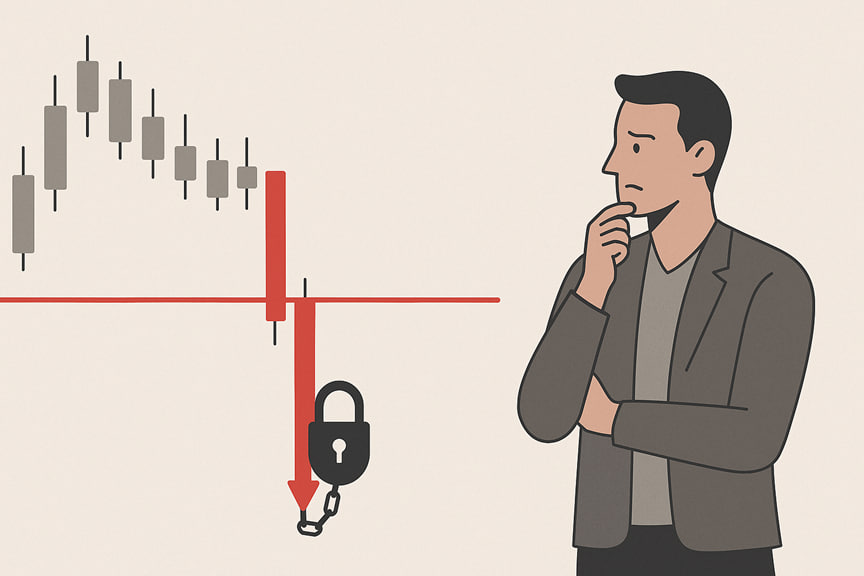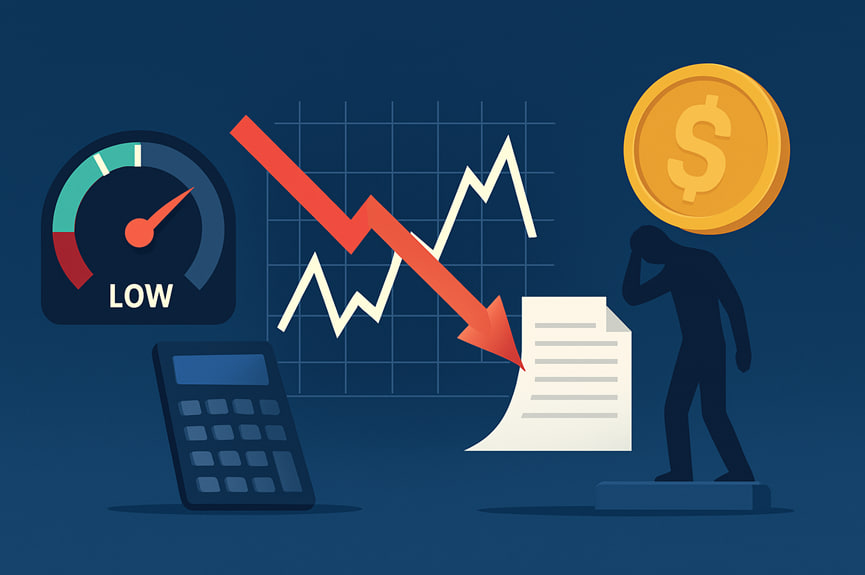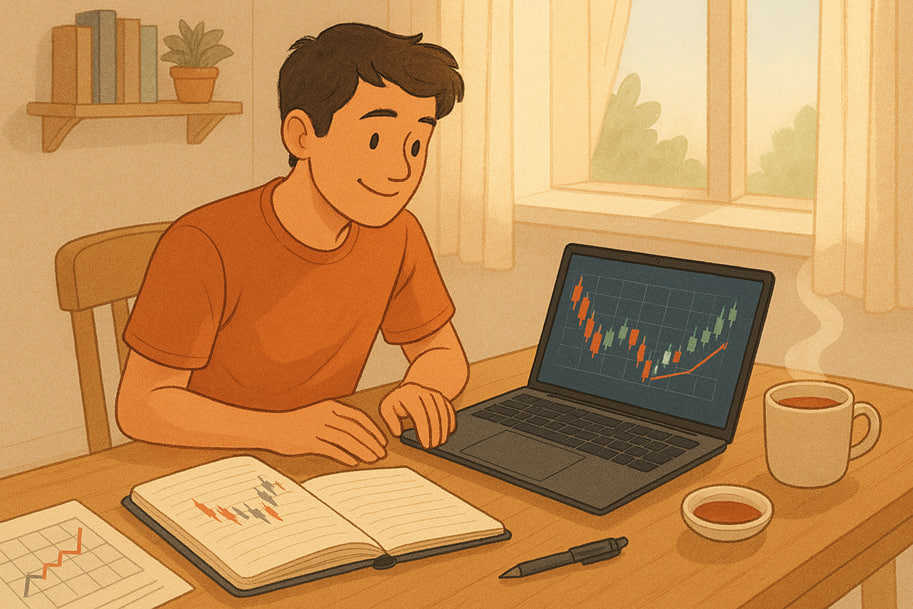Liquidation in Trading: Causes and Protection

Contents
- Introduction
- What Is Liquidation in Trading
- Causes of Liquidation
- How Liquidation Affects Traders
- How to Avoid Liquidation
- Tips for Beginner Traders
- Conclusion
Introduction
When a trader opens a leveraged position, they gain the ability to control an amount significantly larger than their capital. This can amplify profits, but it also increases risk. One of the primary dangers is liquidation.
Liquidation occurs when losses become too large and the trader can no longer maintain the position. In this case, the exchange automatically closes the trade to prevent the balance from going negative. This can happen quickly, especially in the cryptocurrency market, where prices change sharply.
Understanding how liquidation works and how to avoid it helps preserve capital. This topic is crucial for those who trade with leverage, even those with prior experience.
What Is Liquidation in Trading

Definition of Liquidation
Liquidation is the automatic closing of a position when losses reach a critical threshold. The exchange does this to protect both itself and the trader from going into debt. If losses aren’t stopped in time, the account balance can drop to zero or even go negative.
When liquidation occurs, the trader loses almost all the funds invested in the position. This isn’t just a regular loss—it’s a total exit from the trade with no opportunity to change the outcome..
How the Liquidation Process Works
Let’s consider a simple example. A trader opens a long Bitcoin position with 10x leverage. This means that with a $100 investment, they control $1,000. If the price of Bitcoin begins to fall, losses are calculated based on the full $1,000 position.
As the losses grow, the margin level drops. Once it hits a critical threshold, the exchange closes the trade. The asset is sold at the current market price, even if unfavourable. As a result, very little—or nothing—may remain in the trader’s account.
Difference Between Liquidation and Margin Call
A margin call is a warning from the exchange. It means there aren’t enough funds in the account to support the position. The trader has a chance to deposit more funds to avoid liquidation.
The position will be closed if the margin call is ignored and no additional funds are added. In other words, a margin call offers a chance to correct the situation, while liquidation is a forced closure.
Causes of Liquidation

Low Margin Level
The higher the leverage, the less capital is required to open a position, but the smaller the margin for error. Even minor price movements against the position can quickly erode the margin.
If the trader doesn’t add funds or close the position in time, the margin level can fall below the required minimum. At that point, the exchange liquidates the position to prevent further losses.
High Market Volatility
Cryptocurrencies are known for sharp and unpredictable price swings. Prices can rise or fall within minutes. If the trader doesn’t use protective tools such as stop-loss orders, the likelihood of liquidation during a price reversal increases significantly.
Volatility isn’t inherently bad, but becomes particularly dangerous when trading with leverage. A single candlestick on the chart can wipe out the entire deposit without protection to limit losses.
Calculation and Strategy Errors
Some traders underestimate risk. They don’t calculate how much loss they can afford. Many enter trades without a clear plan, hoping the price will favour them.
The most common mistakes that lead to liquidation include:
- Lack of entry and exit strategy
- Ignoring support and resistance levels
- Incorrect position sizing
- Not using stop-loss orders
- Trading based on luck rather than analysis
If a trader doesn’t understand why they’re opening a position or how they plan to exit, they lose control—and their capital.
Oversized Positions Relative to Capital
Sometimes, traders take on too much risk by opening positions that greatly exceed their capital. This often stems from the desire to make quick profits. A common mindset is: “If this works, I’ll make much more.” But the market doesn’t always cooperate.
Even a slight price movement in the opposite direction can result in insignificant losses. With high leverage, this happens very quickly. Such trading resembles gambling—you might hit the jackpot or lose everything in minutes.
Experienced traders avoid risking their entire deposit. They use only a portion of their capital and know precisely how much they’re willing to lose on each trade. This approach allows calm and rational trading without fear of every market fluctuation.
How Liquidation Affects Traders

Financial Consequences of Liquidation
When liquidation occurs, traders almost always lose their entire deposit. The outcome depends on the leverage used and how far the price moved in the wrong direction.
The higher the leverage, the smaller the movement needed to lose everything. A single strong price swing can be enough to trigger forced closure by the exchange. After liquidation, the remaining balance might be zero or too small to open a new position.
This isn’t just a temporary setback. Often, after liquidation, the trader can’t continue trading because they no longer have the funds. Sometimes, recovering the losses takes a long time, or the trader leaves the market entirely.
Capital Loss and Its Psychological Impact
Money is not just numbers on a screen—it represents time, effort, and emotion. The emotional toll can be immense when a trader loses everything they’ve invested. They may experience anger, frustration, or guilt. It’s excruciating if the funds were saved over time and tied to high expectations.
After liquidation, there’s often a strong urge to “win it back.” The trader re-enters the market without a clear plan, acting emotionally and taking even more significant risks. This usually leads to further losses.
In other cases, fear takes over. The trader becomes hesitant to open new trades and loses confidence. They see opportunities but are unable to act. This blocks progress and paralyses decision-making.
To avoid falling into this trap, traders must understand that losses are a part of trading. The key is to control them and not let them affect mental balance.
Impact of Liquidation on Trading Strategy
After experiencing liquidation, a trader’s behaviour can change completely. They may begin to doubt their strategy—even if it had previously worked—and desire to switch approaches, try something new, or quit trading altogether.
Some traders react by increasing risk, hoping to recover losses quickly. They turn to more aggressive methods and ignore established rules. This leads to even more instability.
Others become overly cautious, placing tight stop-losses, avoiding entering trades, and missing out on good opportunities. This, too, can hinder profitability.
It’s important to stay calm and avoid hasty decisions after a loss. Taking a break, analyzing the situation, and identifying what went wrong is a better path forward. Only then should new choices be made.
How to Avoid Liquidation

Risk Management and Capital Allocation
A trader should decide in advance how much of their deposit they’re willing to risk. A reliable approach is to risk no more than 1–2% of the total account per trade. Even if several trades in a row are unprofitable, the deposit will remain intact, and the trader can continue.
Avoid putting everything on one trade. The lower the risk per position, the more consistent the trading results will be. It’s also important to keep records of trades to identify where losses occur.
Using Stop-Loss Orders to Limit Losses
A stop-loss tool automatically closes a position when the price reaches a predefined level. It helps to cap losses. If the price moves against the position, the stop-loss ensures losses stay within the planned range.
Stop-losses are especially important during periods of high volatility. They protect the account from unexpected market swings and provide peace of mind for the trader.
Understanding Margin Trading and Margin Levels
Before trading with leverage, it’s crucial to understand how it works. Many beginners have no idea at what point liquidation will occur. They simply open trades and hope for the best.
What Is Margin Trading
Margin trading allows you to open a more significant position than your capital. For example, with $100 and 5x leverage, you’re effectively trading with $500.
What Is a Margin Level
The margin level is the ratio of your capital to borrowed funds. When this level drops below the broker’s set threshold, your position may be forcibly closed (liquidated) to prevent losses for the broker. Many traders overlook this key figure, which leads to unexpected losses.
Example: If you open a long position with 10x leverage and the asset price drops by 10%, you could lose your entire deposit. Depending on the platform, liquidation might occur earlier, at an 8% drop.
Diversification and Risk Management Principles
Don’t put all your eggs in one basket. Investing the entire deposit in a single asset or trade can lead to a total loss. It’s much safer to spread your capital across multiple areas.
Examples of diversification:
- Trade multiple assets instead of focusing on just one
- Use different strategies for different market conditions
- Vary trade durations: some for the short term, others for the medium term
- Keep part of your capital in reserve rather than using it all
- Always use at least one risk-control tool, such as a stop-loss
This approach reduces overall risk and allows you to withstand losing streaks without significant losses.
Trader Psychology and Discipline
Emotions are a trader’s worst enemy. Fear, greed, anger, and excitement interfere with rational decision-making. When people give in to these emotions, they act impulsively and forget their plan.
A good trader sticks to the rules. They don’t change strategies out of fear or increase risk due to greed. They know when to exit a trade—even when they feel tempted to stay.
To maintain discipline, traders should:
- Have a clear trading plan
- Keep a trading journal and analyze mistakes
- Take breaks after losses
- Avoid trading in a bad emotional state
- Regularly remind themselves of their goals and risks
This kind of mental resilience helps maintain balance and move forward.
Tips for Beginner Traders

How to Start Trading the Right Way
It’s Best to Start Small. There’s no need to deposit a large sum or use maximum leverage immediately. It’s better to spend some time preparing and learning the basic principles.
To begin with, it is essential to choose a reliable exchange with a user-friendly interface and a solid reputation. You should also understand the different types of orders, how leverage works, and how profits and losses are calculated.
In the early stages, the goal isn’t to make money but to learn. It’s better to make small trades, watch the market, and observe how it behaves under different conditions. This approach builds valuable experience.
The Importance of Strategy Testing and Demo Accounts
Many beginner traders jump straight into trading with real money. This is a mistake. It’s much better to test your strategy first using a demo account. It’s almost like real trading, but without the risk of losing funds.
Testing helps you understand how a strategy performs under different market conditions. It reveals repeated mistakes and highlights areas for improvement, which can save a lot of money and stress down the road.
When traders see that their plan works on a demo account, they can more confidently transition to real trading.
Continuous Learning and Growth
The market changes every day. Strategies that worked yesterday may no longer be effective tomorrow. That’s why it’s essential to keep learning.
What beginners should do:
- Study trading and risk management
- Watch educational videos and analyze other traders’ deals
- Participate in forums and trading communities
- Keep a trading journal and review your actions
- Try new approaches, but only after proper testing
The more knowledge you gain, the easier it is to make sound decisions. And an informed trader will almost always outperform someone who trades on impulse.
Conclusion
Liquidation is one of the most unpleasant outcomes in leveraged trading. It can wipe out an account in a matter of minutes. It’s painful not only financially but also psychologically. After such a blow, traders often lose confidence, panic, and make more mistakes.
To avoid this, it’s crucial to understand how margin trading works in advance. Without that knowledge, any leverage becomes a trap. It’s also essential to follow the rules: calculate risks, set stop-losses, avoid oversized positions, and not trade based on emotion.
Beginners should proceed slowly and carefully. Trading is not a race for quick profits — it’s a journey that requires stability and discipline. It’s better to earn less but do it regularly and safely than to chase a big win and lose everything.
If approached wisely, trading can become a source of income and even a way of life. The key is patience, learning from mistakes, and respecting the market.